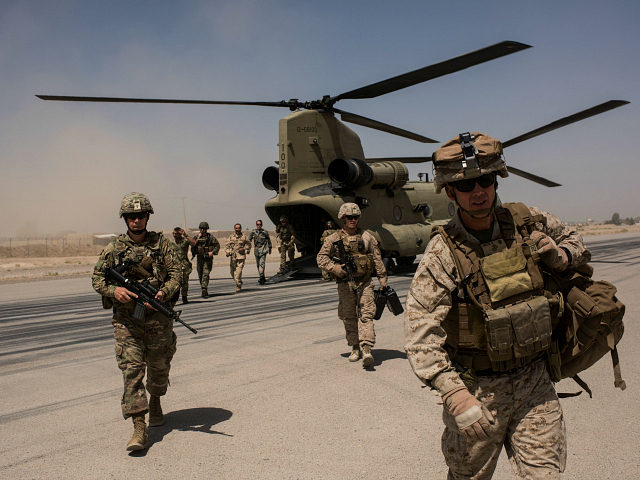The top U.S. commander in Afghanistan, Lt. Gen. John Nicholson, said Tuesday that “well over” 1,000 U.S. advisers would accompany Afghan battalions and commando units onto the battlefield.
“You’re looking at well over a thousand advisers out at any given time and then, on top of that, all the additional enabling capabilities that will be in support of them,” Nicholson told Pentagon reporters Tuesday.
Nicholson said the U.S. Army will produce six security force assistance brigades, who will provide advice and “combat advising at the tactical level.”
“So they’ll go down to the kandak level, the battalion level, which is really where we have operated successfully for the last couple of years with our special forces advisers,” Nicholson said.
He acknowledged this meant greater risks for U.S. troops.
“Yes, there will be greater risk. Absolutely,” he said.
He said the advisers would be backed up by “combat enablers” that will consist of troops providing them and Afghan forces with protection.
“We’re going to great lengths, of course, to assure their force protection. So — so, this is done by all the ways that we would normally assure force protection, through the use of what we know as combat enablers,” he said.
“So, any time a U.S. soldier, Marine, sailor, airman sets foot on the battlefield, there is always a whole array of support behind them. This includes, you know, ISR assets. It includes command and control. It includes fire support in the form of artillery, air, attack aviation — includes the logistical support in the form of medevac,” he said.
The purpose of putting U.S. troops back onto the battlefield is to help the Afghan forces retake 80 percent control over Afghanistan’s population, he said.
Currently, the Afghan government controls only 64 percent of the population, while the Taliban either contests or controls the rest. Last week, Nicholson predicted it would take two years to do it.
Nicholson said Afghan forces were now on the offensive. This year, he said all six of Afghanistan’s corps were all on the offensive at once for the first time.
He also said the U.S.-led coalition would help the Afghan government double the size of its commando force and increase the size and capability of its fledgling air force.
He said the Afghan military would focus on regeneration over the winter and go on the offensive at the start of the spring fighting season in March.
The Trump administration announced its Afghan strategy in August, with President Donald Trump siding with a plan to increase the number of U.S. forces in Afghanistan by 3,000 forces in order to hit the Taliban harder and force them to the negotiating table.
The new plan is based on the absence of a withdrawal date for U.S. troops — which U.S. military commanders believe is the crucial change from the previous strategy. The Obama administration had ordered a troop surge in Afghanistan in 2009, only to announce a drawdown beginning in 2011.
Nicholson said last week that he believed Afghanistan was still at a stalemate, but this week, he told reporters that things had “turned a corner.”
“Now, looking ahead to 2018, as President Ghani said, he believes we have turned the corner and I agree. The momentum is now with the Afghan Security Forces and the Taliban cannot win in the face of the pressures that I outlined. Again, their choices are to reconcile, live in irrelevance, or die,” he said.
“To the servicemembers who have served in Afghanistan — and especially those who’ve been wounded — and to the families of our fallen comrades, you have earned our eternal respect and gratitude. We will deliver on your sacrifice,” he said.

COMMENTS
Please let us know if you're having issues with commenting.